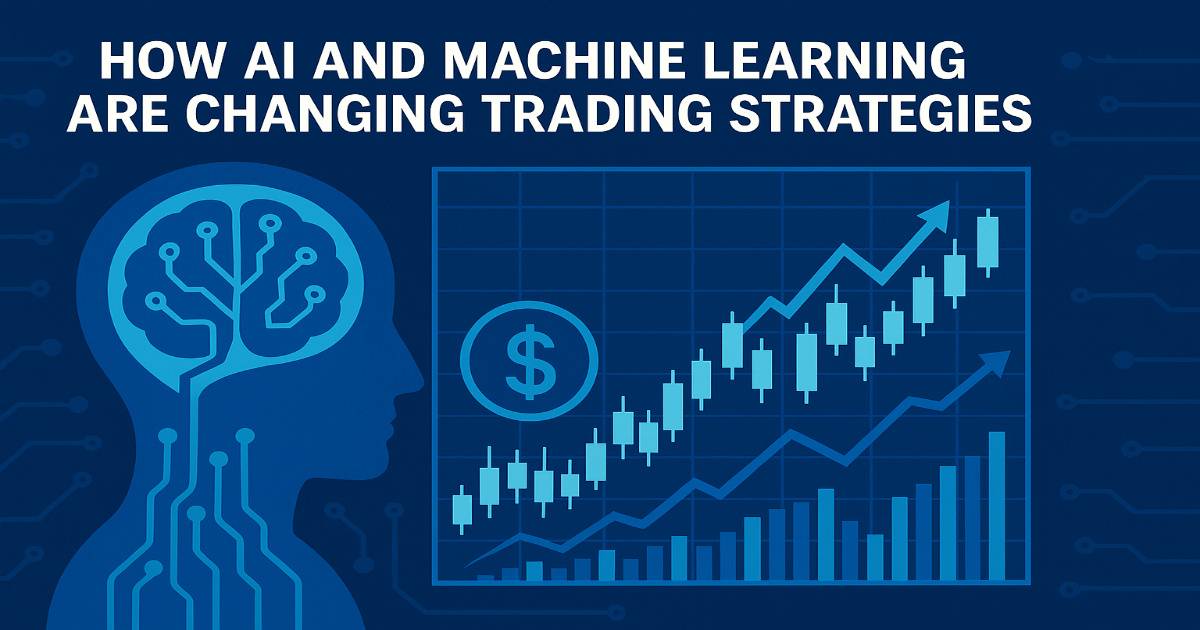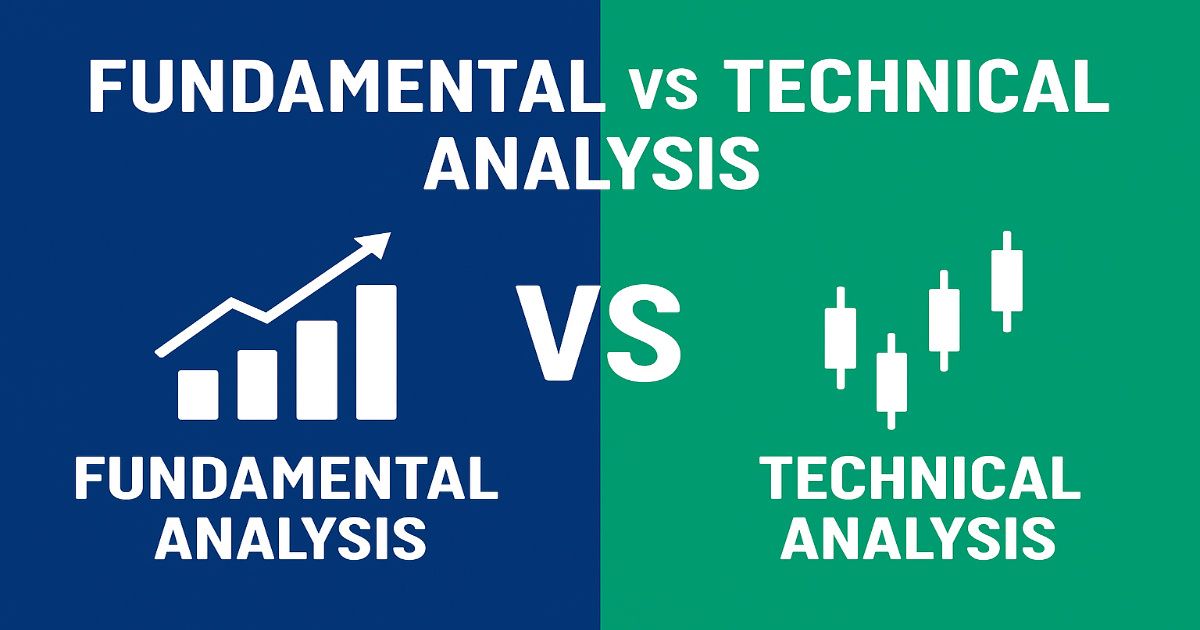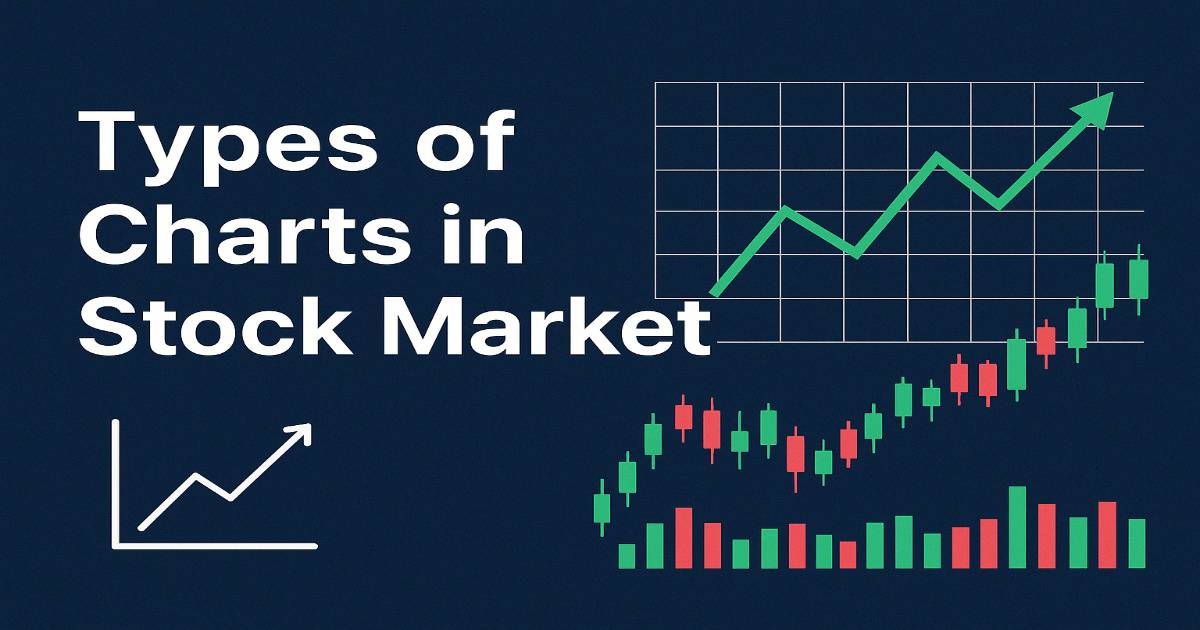In the fast-paced world of financial markets, success often depends on information speed, accuracy, and smart decision-making. Today, Artificial Intelligence (AI) and Machine Learning (ML) are revolutionizing how trading strategies are developed and executed. From analyzing huge datasets in milliseconds to predicting market movements, AI and ML are enabling smarter, faster, and more efficient trading.
The financial world is rapidly evolving, and at the heart of this transformation is technology. One of the biggest shifts in recent years has been how AI and machine learning are changing trading strategies across global markets. From Wall Street hedge funds to Indian retail investors, everyone is now exploring intelligent systems to gain a competitive edge.
Traditionally, traders relied on charts, technical indicators, and manual analysis. But today, with the explosion of real-time data and computing power, AI and machine learning have made it possible to automate trades, detect hidden patterns, and even predict market movements with astonishing accuracy. It’s no surprise that financial firms are investing billions to stay ahead with AI-powered models.
This blog will explore how AI and machine learning are changing trading strategies, the tools and techniques behind this shift, real-world examples of AI success in the market, and the ethical challenges that come with it. Whether you’re a curious investor or a fintech enthusiast, understanding this evolution is essential for navigating the future of trading.
What Are AI and Machine Learning in Trading?
Artificial Intelligence (AI) refers to machines performing tasks that normally require human intelligence. Machine Learning (ML) is a subset of AI that allows systems to learn and improve from data without being explicitly programmed.
In trading, AI and ML help in:
- Detecting patterns in market data
- Predicting price movements
- Automating trading strategies
- Managing risk in real-time
- Enhancing portfolio performance
How AI & ML Are Changing Traditional Trading Strategies
1. Data-Driven Decision Making
AI can analyze billions of data points — including price movements, social media sentiment, news, and economic indicators — in real time. Traditional traders often rely on historical charts or technical indicators, but AI combines structured and unstructured data to make more informed decisions.
Example: AI systems may scan Twitter, financial news, and SEC filings instantly to predict a stock’s next move before the market reacts.
2. Algorithmic Trading (Algo-Trading)
Machine learning is enhancing algorithmic trading, where pre-programmed instructions execute trades at high speed. These ML-powered algos adjust strategies based on changing market conditions, something traditional systems can’t do as effectively.
Example: A machine learning model might notice that a strategy based on moving averages no longer works in volatile markets and adjust its trading rules in real time.
3. Predictive Analytics
ML algorithms can predict price trends, volatility, and volume with greater accuracy. Using models like Random Forests, Neural Networks, or Support Vector Machines, traders can gain an edge.
Example: Predicting the next-day movement of Nifty 50 or S&P 500 based on historical behavior and global cues.
4. Sentiment Analysis
AI analyzes social media posts, news articles, and earnings call transcripts to detect investor sentiment. This helps traders act before major price swings occur.
Example: If Elon Musk tweets about a cryptocurrency, AI sentiment analysis can immediately react and trade accordingly.
5. Risk Management
AI models help traders manage risk dynamically by identifying unusual patterns, flagging high-risk trades, and automatically adjusting portfolio exposure.
Example: An AI-powered risk engine may reduce your equity exposure if it detects rising volatility or economic uncertainty.
6. Portfolio Optimization
AI helps build and rebalance portfolios for maximum returns and minimum risk using strategies like Modern Portfolio Theory, Monte Carlo simulations, and Deep Learning techniques.
Benefits of Using AI and ML in Trading
Speed & Efficiency: Executes complex strategies in microseconds
Accuracy: Reduces emotional or psychological errors
Scalability: Handles huge data volumes and multiple assets
Backtesting: AI can simulate strategies on past data quickly
Adaptability: Learns from market shifts and evolves strategies
Challenges and Limitations
While AI offers exciting potential, it’s not without risks:
- Overfitting: ML models might perform well on historical data but fail in real markets
- Black Box Models: Traders may not fully understand why an AI makes a certain decision
- Data Dependency: Poor data quality can lead to bad predictions
- Regulatory Concerns: Use of AI in finance is under increasing scrutiny
Evolution of Algorithmic Trading with AI
Over the last two decades, the financial markets have witnessed a technological revolution, and at the heart of this transformation is algorithmic trading. Initially introduced as a tool for automating repetitive trading tasks, algorithmic trading — or algo-trading — has evolved into a sophisticated system capable of executing complex strategies within milliseconds. What once relied purely on predefined human logic has now entered a new era, powered by Artificial Intelligence (AI) and Machine Learning (ML).
In the early 2000s, algorithmic trading primarily followed rigid, rule-based instructions — such as buying a stock when its 50-day moving average crossed above its 200-day moving average. These systems improved efficiency and reduced human error but lacked the flexibility to adapt to ever-changing market dynamics. The need for smarter, more adaptive strategies paved the way for AI integration.
Today, AI and ML have transformed algorithmic trading from static decision-making into dynamic, data-driven intelligence. These systems now learn from historical data, analyze real-time market behavior, and even process unstructured information like financial news or social media sentiment. The result? More precise predictions, quicker decisions, and a significant edge in highly competitive markets.
This blog post explores the journey of algorithmic trading — from its early rule-based models to today’s AI-powered systems. We’ll look at key phases of its evolution, how AI technologies are used in trading, and what the future may hold as these innovations continue to redefine the trading landscape.
Key AI Techniques Used in Market Analysis
1. Machine Learning (ML) Algorithms
Machine Learning is the backbone of AI in trading. These algorithms use historical data to recognize patterns and make predictions about future market movements.
- Supervised Learning: Used for predicting stock prices, price direction, or credit risk.
- Unsupervised Learning: Used for clustering similar assets or detecting anomalies.
Example: A supervised ML model can predict if a stock will go up or down tomorrow based on past price action.
2. Natural Language Processing (NLP)
NLP enables AI to read and interpret unstructured text data like news headlines, earnings call transcripts, social media posts, and analyst reports.
- Sentiment Analysis: Detects positive or negative tone in the news
- Keyword Extraction: Identifies impactful words like “layoffs” or “profit warning”
Example: If a company’s earnings report uses negative language, AI can anticipate a potential drop in stock price.
3. Time Series Forecasting
This technique models historical price or volume data over time to forecast future movements.
- Uses ARIMA, LSTM (Long Short-Term Memory), or Prophet models
- Tracks patterns like seasonality, trend, and volatility
Example: Predicting the next 7 days of Nifty 50 based on historical patterns.
4. Deep Learning
Deep learning uses neural networks with multiple layers to learn complex patterns in large datasets.
- Especially useful for high-frequency trading and image-based chart analysis
- Can detect signals that traditional indicators miss
Example: A CNN (Convolutional Neural Network) analyzes candlestick chart patterns automatically.
5. Anomaly Detection
This technique identifies unexpected market behavior, such as sudden spikes or drops, unusual volumes, or fraudulent activity.
- Based on unsupervised learning
- Alerts traders to unusual market conditions
Example: AI detects a sudden volume spike in a midcap stock before the news breaks.
6. Clustering and Classification
Clustering groups similar stocks or trading days, while classification assigns labels (e.g., “bullish” or “bearish”).
- Helps with sector analysis, portfolio diversification, and pattern grouping
- Tools: K-Means, Decision Trees, Random Forest
Example: AI groups tech stocks with similar risk-return profiles for better sector exposure analysis.
AI Success Stories in Trading
1. Renaissance Technologies – The Quant King
Renaissance Technologies, founded by mathematician Jim Simons, is perhaps the most famous hedge fund known for using AI and machine learning.
- Their flagship Medallion Fund reportedly delivers annualized returns of over 60% (before fees).
- The firm uses complex models and massive datasets to make thousands of small trades daily.
- AI helps detect patterns that are invisible to human analysts.
Success Point: Renaissance’s AI-based approach has consistently outperformed traditional fund managers for decades.
2. Two Sigma Investments – Data-Driven Edge
Two Sigma uses machine learning, NLP, and predictive modeling to analyze data from thousands of sources, including weather patterns and social media.
- Manages over $60 billion+ in assets.
- Runs millions of simulations per day to refine trading models.
- AI helps identify hidden relationships between macro events and asset prices.
Success Point: Two Sigma’s success lies in its ability to merge science and finance using AI.
4. BlackRock’s Aladdin Platform
BlackRock uses AI in its proprietary Aladdin system, which manages over $20 trillion in assets.
- Combines risk analytics, portfolio optimization, and machine learning.
- Used by major institutions globally for both trading and risk management.
Success Point: AI-enabled risk control and efficiency at a massive scale.
Ethical and Regulatory Considerations
1. Transparency & Explainability
AI models — especially deep learning — are often considered “black boxes,” meaning their decision-making process is not easily understood.
2. Market Manipulation Risks
AI can execute thousands of trades per second, which may unintentionally create price manipulation, flash crashes, or front-running scenarios.
3. Bias in AI Models
If AI is trained on biased historical data, it may reinforce inequities or flawed market assumptions.
4. Regulatory Lag
Financial regulations often struggle to keep up with fast-moving AI innovations.
- Lack of updated laws creates uncertainty for fintech startups and traders.
- Misuse or unchecked AI trading can lead to systemic instability.
Regulatory Bodies Involved:
- SEBI (India) – Reviewing AI-based algo trading policies
- SEC (USA) – Monitoring high-frequency and AI-based trading practices
- ESMA (Europe) – Focus on algorithm transparency under MiFID II
Future Outlook: The Next Wave of AI in Trading
The future looks bright for AI-powered trading, and the next wave will emphasise greater transparency, efficiency, and accessibility. There will be further democratisation of the stock market, and more retail investors will come into the picture. There will be more refined risk management, analysis of diverse sources of data, and hyper-automation, along with sentiment analysis and a focus on regulatory and ethical trading norms. AI models are expected to get better at predicting market volatility and mitigating the same through the analysis of market indicators/signals, trends, and news sentiments.
FAQs
What is algorithmic trading?
Algorithmic trading refers to using computer programs and algorithms to execute trades automatically based on predefined criteria like price, volume, timing, or other market signals.
How is AI used in algorithmic trading?
AI is used to enhance trading strategies by analyzing large datasets, identifying hidden patterns, predicting market movements, and adjusting strategies in real-time using machine learning and other techniques.
What are the benefits of using AI in trading?
1. Faster and more accurate decision-making
2. Reduced human error and emotional bias
3. Ability to process multiple data sources simultaneously
4. Predictive analytics for better returns
Is AI trading legal in India?
Yes, AI and algorithmic trading are legal in India. However, they are regulated by SEBI (Securities and Exchange Board of India), which has proposed guidelines to ensure transparency and prevent misuse.
Will AI replace human traders completely?
AI will automate many routine tasks, but human traders will still play a crucial role in strategy design, risk management, and interpreting macroeconomic trends.
Can a beginner use AI in trading?
Yes, many platforms offer AI-based tools with user-friendly interfaces. Even beginners can benefit through robo-advisors or algorithmic trading platforms.
Is AI trading better than human trading?
AI is faster and more consistent, but combining AI with human intuition usually offers the best results.







